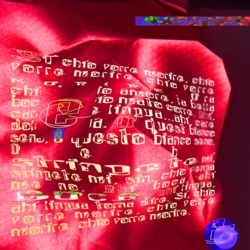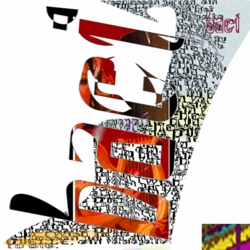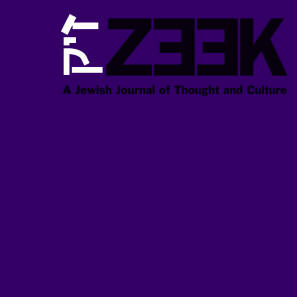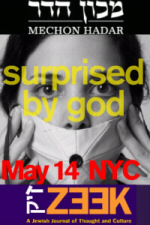 May 07
May 07
Hillel Zeitlin: The Foundations of Hasidism
Rabbi Or N. Rose
|
Translator's Introduction Hillel Zeitlin (1871-1942), journalist, political activist, poet, and mystical author, was born and raised in the village of Korma in White Russia, within a traditional Jewish milieu. His mother came from a prominent Hasidic (Habad-Lubavitch) family, and his father, a businessman, received a fine Mitnaggedic (Lithuanian-style) education. As a young man Zeitlin worked as an itinerant Jewish teacher in the Pale of Settlement. His travels provided him with exposure to modern Jewish and Enlightenment culture. Fascinated by philosophy, literature, and politics, Zeitlin left behind the religious lifestyle of his youth for a time. Among his early publications were monographs on Spinoza (1900) and Nietzsche (1905). Settling in Warsaw in 1906, Zeitlin made a gradual return to a life of strict religious observance, inspired by his re-engagement with Jewish mysticism. However, he remained an independent and unconventional thinker, seeking to recast the teachings of Kabbalah and Hasidism into an attractive idiom for young secular Jews. Zeitlin’s home became a meeting place for socialists, occultists, Hebraists, and religious seekers. Among the people that passed through Zeitlin’s Neo-Hasidic court was the young Abraham Joshua Heschel (1907-1972). Long before the outbreak of Nazism, Zeitlin began experiencing apocalyptic visions in which he foresaw the destruction of European Jewry. As the Holocaust drew nearer, he called upon his community to repent and sought to organize groups of mekhuvanim (“intentional ones”) to pray and study together. According to legend, Zeitlin was murdered by the Nazis on the way to Treblinka wrapped in tallit (prayer shawl) and t’fillin (phylacteries), carrying a copy of the Zohar (the crowning work of medieval Kabbalah) under his arm. The following are brief excerpts from Zeitlin’s Hebrew essay, “The Foundations of Hasidism” (1910) in English translation. This section of the article is titled “Elevating the Divine Attributes” and deals with Hasidic notions of unity and duality, good and evil, and the potential for spiritual growth and transformation. Although written close to a century ago, “The Foundations of Hasidism” remains among the most incisive treatments of classical Hasidic thought. I wish to thank my teacher, Dr. Arthur Green (himself a student of Heschel), for introducing me to Zeitlin’s writings several years ago. Dr. Green and I are now (slowly) working on the publication of a collection of Zeitlin’s Hebrew and Yiddish writings for English readers. This translation is dedicated to Rabbi Zalman Schachter-Shalomi: Architect of a New Yavneh.
|
(1)
Elevating the Divine Attributes
Hasidism, like the Kabbalah, sees duality in everything: good and evil, purity and impurity, truth and falsehood, holy and demonic spheres. Hasidism, like the Kabbalah, returns in almost every teaching to the same phrase, “God created this side by side with that”... However, this duality is only apparent and not an inner reality. What I mean to say is that the concept of dualism does not emerge from the essence of Hasidism, from the depths of its soul.
Regarding the subject of evil… the students of the Ba’al Shem Tov [Besht] taught us explicitly in their master’s name that evil is only a lower form of good [Keter Shem Tov, u’Pharoh hikriv] and when it is repaired evil is transformed into complete goodness. Meaning, good and evil are not opposites, but are of one essence; when this essence is in the lower rungs it is called “evil,” and when it is in the upper rungs, it is called “good”….
 Since the Hasidim see no difference between natural and moral forms of good and evil, and the “good” is simply that which is close to God and “evil” that which is distant from Him, the Besht can rightfully state that the entire issue of holiness and of the demonic (a subject which the Hasidim and the Kabbalists give much thought to) is, in reality, only an allegory. However, because this allegory has been repeated for thousands of years, because its surface meaning points to an absolute duality in creation, and not every one understands its true depth, many people mistakenly believe that the dualistic interpretation is the true message of the allegory.
Since the Hasidim see no difference between natural and moral forms of good and evil, and the “good” is simply that which is close to God and “evil” that which is distant from Him, the Besht can rightfully state that the entire issue of holiness and of the demonic (a subject which the Hasidim and the Kabbalists give much thought to) is, in reality, only an allegory. However, because this allegory has been repeated for thousands of years, because its surface meaning points to an absolute duality in creation, and not every one understands its true depth, many people mistakenly believe that the dualistic interpretation is the true message of the allegory.
Therefore, even in Hasidic texts you find many places where holiness and the demonic are spoken of as two opposing forces, as two entities created by the one unique God, which constantly do battle and will continue to do so until in the end of time, when holiness will finally triumph ….
It is my claim, however, that Hasidism does not recognize any duality in creation, just as it does not recognize any duality in the Creator. Hasidism recognizes only one unique divine power that vitalizes and sustains evil and good equally. It is just that when the divine light descends from the “Secret of all Secrets” [God’s primordial depths] from rung to rung, it thickens and takes on a material form. And when it finally arrives at the lowest of all rungs, it is barely visible…
When we reflect upon these lower rungs, from which the brilliance of the divine light is hidden, we call them “evil,” and we call a person who cleaves only to the outer manifestations of the light an “evildoer” or a “sinner.” However, when a person leaves this lowly rung and cleaves to higher ones, or begins to see the divinity that is present in the lower rungs, he repairs and elevates the evil [to its original divine source]. In other words, he elevates the divinity that is hidden in the heavy fog of corporeality, and thus returns it to its source.
According to this [theory] there is no real difference between good and evil attributes. Therefore, all human attributes are called “evil” when they are sunken in vulgarity and pettiness, but are called “good” when they are purified and uplifted.
All that is found in [the souls of] the students of the evil Balaam is also found in the [souls of the] students of Abraham our Father. The only difference is that with Abraham’s students it takes a holy form, and in the students of Balaam it is impure.
As I see it, the depth of this statement is that both [groups] possess great and exalted souls. However, Balaam’s students are only conscious of themselves and their own pleasures. As great as their souls may be, they are limited, shrunken and drowning in vulgarity (because when man’s little world is separated from the depth, richness, and beauty of the life of Ein Sof – the All – it is like pond water, muddied and putrid). Because Abraham’s students join the greatness of their souls to the greatness of Ein Sof [Infinity or the Infinite], they transform themselves into temples for the Shekhinah [the Indwelling Divine Presence] – their little worlds become vessels for divinity, the small stream flows into the universal ocean….
The Hasidic theory of attributes is a theory of the alchemy of the soul. Just as the alchemists worked to transform metal into gold, so the Hasidim work to transform human attributes into divine attributes; and the Hasidim reveal to us the inner workings of their sacred science. They do not know of just one path for raising all of the attributes; [rather, they believe that] there are many different paths [leading to spiritual transformation]. It all depends on the nature, character, and depth of each attribute and on the character and temperament of each individual…
The remainder of this chapter is dedicated to a discussion of Hasidic techniques for spiritual transformation, for “elevating the divine attributes.” In these pages Zeitlin writes about various forms of visualization and contemplation.
(2)
How does visualization work?
 The soul, the princess, is taken from the throne of glory and is placed in a physical body, which has many desires. [Once in the body,] the soul follows after the body and forgets about her father on high. However, when the sky, stars, sun, and moon are shown to her and it is explained that she was created in the very same place as they were, she raises herself upward [to the heavenly expanse].
The soul, the princess, is taken from the throne of glory and is placed in a physical body, which has many desires. [Once in the body,] the soul follows after the body and forgets about her father on high. However, when the sky, stars, sun, and moon are shown to her and it is explained that she was created in the very same place as they were, she raises herself upward [to the heavenly expanse].
This is one form of visualization. Here is a second: a person sees the complete “image of God” – the true tzaddik [“holy man,” Hasidic master], his light, kindness, deeds, and customs. One sees before him a symbol of wholeness, beauty, and exaltedness, and this sight causes the individual to repair and elevate his own soul.
The soul rests upon every limb… that a person uses to fulfill a mitzvah or some other holy deed. And when the soul rests on that limb, the limb begins to vibrate from the soul’s power… That is why the movements of the tzaddikim are so pleasant to look at: the power of their movements comes from their souls; and the soul is a part of divinity above, the source of all goodness [Noam Elimelekh, Kedoshim].










